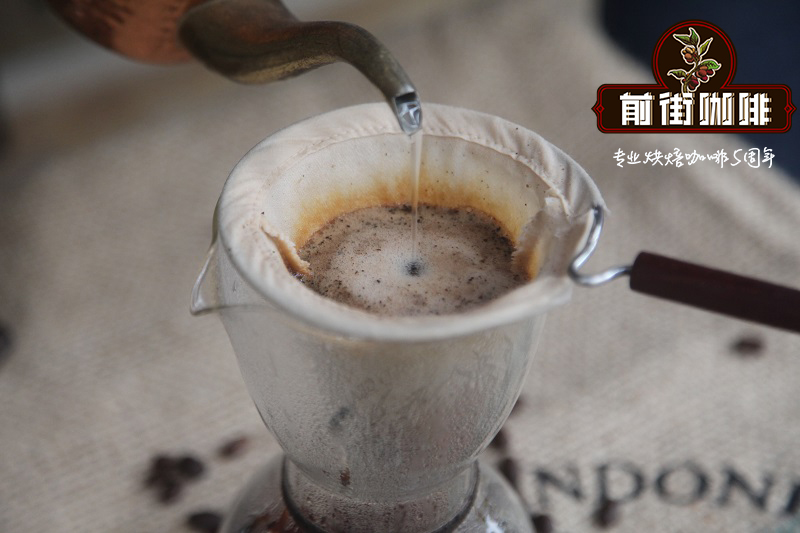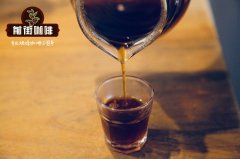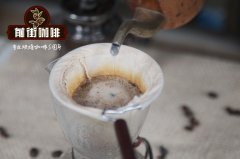Is black coffee good? can black coffee lose weight? explore the meaning of fine coffee-- black coffee

Professional coffee knowledge exchange More coffee bean information Please pay attention to coffee workshop (Weixin Official Accounts cafe_style)
Black Original Flavor and Coffee Aesthetics
Recently, a street activity called Coffee Common has sprung up in New York, USA, sharing professional coffee knowledge with passers-by.
The masses. The event included brewing "regular grade" and "Guatemalan single-serve hand-brewed" coffee roasted by Portland Heart Coffee, and testing the flavor of two cups of black coffee with added sugar and milk. The results of the activity survey showed that many respondents felt burnt, bitter, and even disgusted with the black coffee of the average grade, while Heart Coffee's pure black coffee (Guatemala) made many people praise "a fresh black coffee"! And when both black coffees were sweetened with milk, the comment "there's really no difference."
I believe that as a part of the coffee supply, everyone should have heard of the so-called Third Wave of Coffee. What does this term have to do with us? In fact, as coffee history progresses, people gradually begin to pay more attention to coffee. From the convenience of coffee, to the emphasis on coffee flavor, and even return to the most primitive coffee flavor-black coffee. The overall trend of coffee in recent years can be said to be influenced by the third wave of coffee operations. In Taiwan, the number of black coffee drinkers has increased year by year, and it is not difficult to see that consumers have more requirements and higher expectations for coffee experience. Therefore, coffee manufacturers have moved towards fine coffee that can truly represent the local customs of coffee producing areas, such as single-product coffee and manor coffee. The positive benefit brought by following the trend is that in addition to increasing the unit price of customers, it also increases the revenue of coffee beans. In particular, the sales of coffee in the collection stores offering hand-brewed service increased by three times on average compared with the sales of coffee in ordinary stores.
Operation Coffee III
In this world of high value-added boutiques, coffee is always compared to wine. About producing areas, manors,
Different geographical characteristics and climates, etc., even have a "cup test" process similar to "wine tasting" to evaluate the aroma of each coffee bean. In the third wave of coffee aesthetics, there is also the highest grade coffee appreciation form. Gradually, everyone sought to return to the more natural, non-interfering follicular extraction method, allowing coffee to emit its own delicate and elegant "Terroir" fragrance, only to faithfully present the natural flavor spectrum of water, soil and climate. The following is a summary of Operation Three Waves of Coffee.
The First Wave: Coffee Fast Food (1940-1960)
Around the time of World War II, it was mostly "instant coffee", which was easy to carry.
Coffee is over-extracted and bitter
More creamer, low freshness
Mostly Robusta beans.
The Second Wave: Coffee Refinement (1966-2000)
The emergence of the pursuit of refined enterprises and storefronts, with Italian espresso coffee as the mainstream.
Pursue fresh baking and fresh grinding (mostly rebaked)
Arabica species
Coffee machine extraction, taste spectrum less room for change
Fancy flavored coffee drinks such as latte and cappuccino are popular
The Third Wave: Aesthetics of Coffee (2003-Today)
At this stage, scientific equipment is used to assist coffee extraction, paying attention to various details, including different professional levels such as soil and water, regional flavor, variety, concentration and extraction rate.
Reduce the roast to retain more flavor characteristics
Pay attention to low pollution treatment method
Filter black coffee into the mainstream, pay attention to the richness of coffee flavor itself
Origin Direct to Baking Factory
Connotation and Elements of Fine Products
Do you know how to make a good cup of coffee?
With the geographical characteristics and climatic characteristics of different producing areas, the processing method, roasting degree and even extraction equipment will create different personality and flavor of each cup of coffee. Each of the interlocking details, each journey has a different meaning for coffee beans, and is also a key element to enrich a good cup of coffee. It is precisely because the process of turning coffee seeds into a good cup of coffee is quite difficult that such a cup of good coffee seems so precious.
Through rigorous screening conditions, the yield is small but the high quality and consistency are maintained, and it deserves to be called fine coffee.
You should give black coffee a chance.
Try thinking about it this way: a cheap drink, we can make it easy to swallow by simply mixing it with Sangria,
But if it is a glass of super good wine, it is impossible to add sugar, fruit, or brandy to the points, and many times it will spoil the good wine. On the other hand, if there is a good coffee that can emit natural sweetness and luster without added sugar milk, then should we give such pure black coffee a chance? Let's go black!
Important Notice :
前街咖啡 FrontStreet Coffee has moved to new addredd:
FrontStreet Coffee Address: 315,Donghua East Road,GuangZhou
Tel:020 38364473
- Prev

How should coffee beans be preserved? how should roasted coffee be preserved? how should coffee be stored?
Professional coffee knowledge exchange more coffee bean information Please pay attention to the coffee workshop (Wechat official account cafe_style) high-quality roasted beans are important, but how to improve the preservation of beans is a key issue. Coffee is also a kind of food, so it should be well preserved to make sure it is stable and will not go bad. Although South Korea legally stipulates that coffee beans are valid for one year, but in fact
- Next

What is the definition of fine coffee? Is hand-brewed coffee a fine coffee?
Professional coffee knowledge exchange More coffee bean information Please pay attention to coffee workshop (Weixin Official Accounts cafe_style) What is boutique coffee? What exactly is specialty coffee? How can it be called a "boutique"? To understand fine coffee, you must first start with the source of coffee. The origin of a cup of coffee can be roughly divided into three parts: innate conditions, acquired processing, and end.
Related
- Beginners will see the "Coffee pull flower" guide!
- What is the difference between ice blog purified milk and ordinary milk coffee?
- Why is the Philippines the largest producer of crops in Liberia?
- For coffee extraction, should the fine powder be retained?
- How does extracted espresso fill pressed powder? How much strength does it take to press the powder?
- How to make jasmine cold extract coffee? Is the jasmine + latte good?
- Will this little toy really make the coffee taste better? How does Lily Drip affect coffee extraction?
- Will the action of slapping the filter cup also affect coffee extraction?
- What's the difference between powder-to-water ratio and powder-to-liquid ratio?
- What is the Ethiopian local species? What does it have to do with Heirloom native species?

